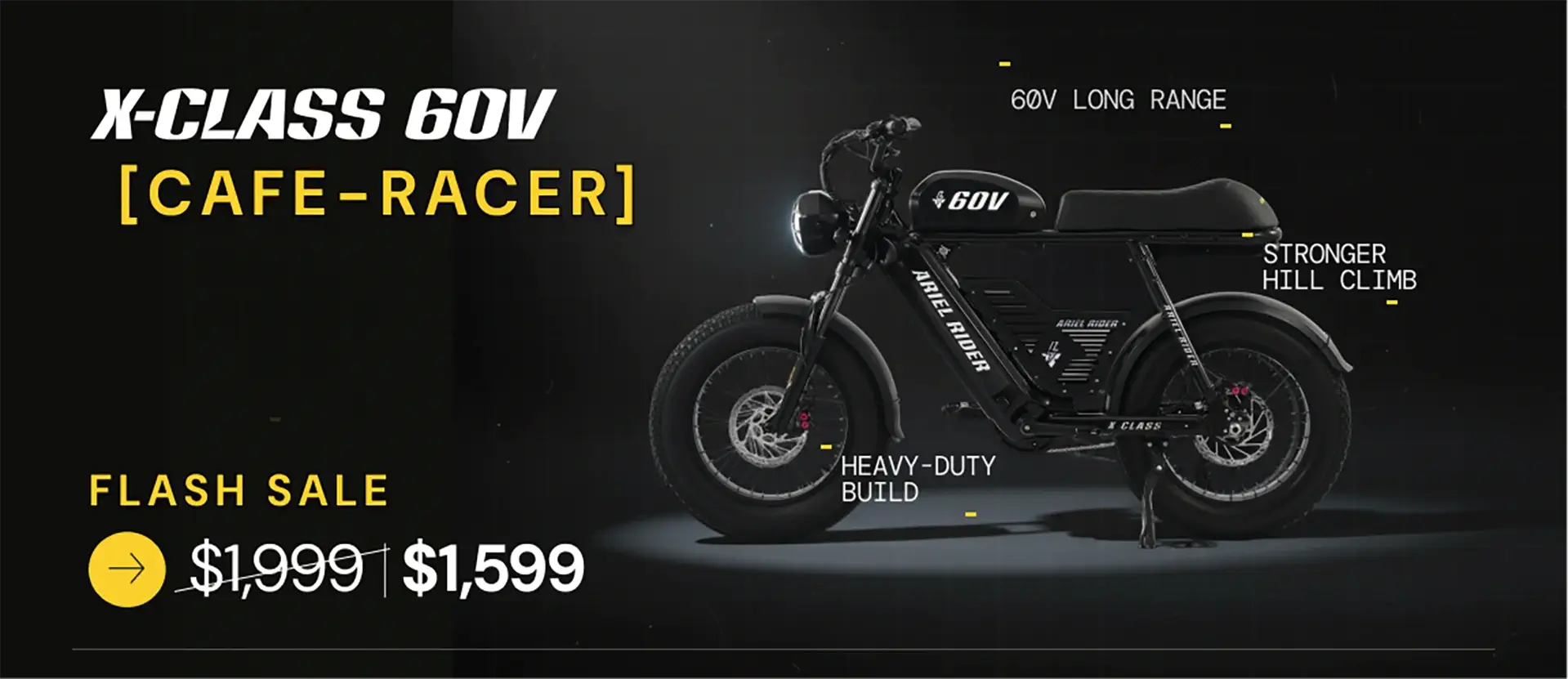At Ariel Rider, your safety and the longevity of your bike battery are our top priorities. Please carefully review and follow these guidelines to ensure safe handling and optimal battery performance while minimizing potential risks.
CHARGING:
-
Always plug the charger into a regular wall outlet before connecting it to the battery. The green light on the charger should turn red when charging. If it remains green while the battery is not fully charged, unplug the charger and check the connection.
-
DO NOT charge the battery while it is in the ON position (if applicable).
-
Only use the charger provided by Ariel Rider. DO NOT use aftermarket chargers, as they may cause damage or pose safety risks.
-
Inspect your charger regularly for damage. DO NOT use a charger that has been exposed to improper storage conditions (e.g., water damage). Safely dispose of any damaged charger immediately.
-
For the first charge, we recommend charging the battery for 6-8 hours to properly condition the lithium-ion cells. Afterward, partial charges are safe and acceptable.
-
DO NOT charge the battery for longer than 12 hours and DO NOT leave the charger plugged into a wall outlet beyond this timeframe.
-
While we recommend recharging after each ride, this may not be necessary for short-distance rides (a few miles daily). Overcharging can reduce battery lifespan. For short rides, recharge when the battery reaches 30%-50% capacity.
-
Use the bike and recharge the battery at least once every 90 days to maintain optimal performance.
-
Always charge the battery at room temperature (20°C, 68°F). Operate the battery only between 23°F to 104°F (-5°C to 40°C).
STORAGE:
-
Never store your bike with an empty battery. A completely discharged battery may suffer permanent damage.
-
For long-term storage, charge the battery to approximately 75%. This helps maintain battery health and prolongs lifespan.
-
Store the battery in a cool, dry place between 14°F to 104°F (-10°C to 40°C), ideally at room temperature (68°F or 20°C).
-
Avoid leaving the battery in direct sunlight or high-temperature environments (e.g., inside a car).
-
DO NOT expose the battery to water. If the battery is submerged, store it outdoors away from flammable materials and contact a hazardous e-waste disposal service immediately. DO NOT attempt to reuse the battery.
-
Protect the battery from extreme electrical shocks or physical damage.
RECYCLING:
-
Dispose of lithium-ion batteries responsibly. Use recycling services like Call2Recycling, Inc. (1-877-273-2925) or visit drop-off sites at:
- Batteries Plus
- Home Depot
- Lowes
- Staples
-
DO NOT dispose of lithium-ion batteries in household garbage or recycling bins.
SHIPPING:
-
WARNING:
Shipping lithium-ion batteries requires DOT certification. NEVER attempt to self-ship a battery. Improper handling can result in overheating or fire, and self-shipping may violate legal regulations. -
If your battery is damaged or malfunctioning, DO NOT open, charge, or use it. Contact Ariel Rider customer support immediately for assistance.
IN CASE OF A FIRE:
-
Lithium-ion batteries are highly combustible when damaged. Be prepared for the unlikely event of a battery fire.
-
Use a Class B fire extinguisher (ABC or dry chemical) to extinguish a battery fire.
-
Keep a fire blanket at home to safely move a burning battery outdoors. Avoid inhaling fumes, as they are hazardous.
-
If safe to do so, submerge the burning battery in a large container filled with water to contain the fire. DO NOT touch the water or drain it. Contact professionals to safely dispose of the water and battery.
By following these safety guidelines, you help ensure safe battery usage and longevity while minimizing risk. For any questions or concerns, please contact Ariel Rider customer support.
We're here to help.



